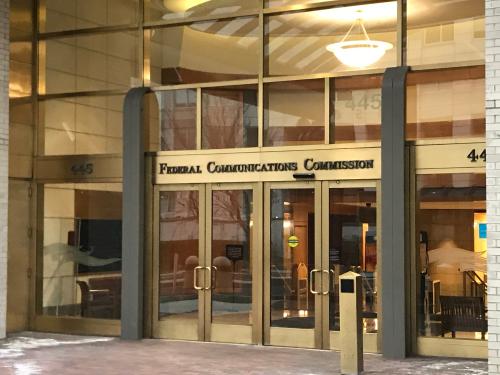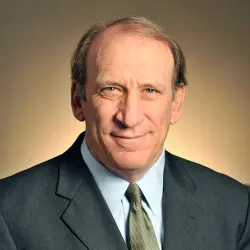The COVID-19 pandemic has affirmed how important broadband internet access is to the American economy, both today and in the decades to come. Now, with a new administration taking office in Washington, what broadband policies should the Federal Communications Commission (FCC) prioritize?
As it stands, the Biden administration’s FCC is inheriting a large set of problems that the Trump administration failed to address, or in some cases, made worse. This piece—the first of a two-part series—will outline problems relating to the FCC’s Universal Service mandate. Part 2 details institutional and strategic issues that Biden’s FCC will have to clean up.
Funding for universal service is in a death spiral
History may record former FCC Chairman Ajit Pai’s greatest public relations success and greatest policy failure as the same thing. By ignoring it, Pai managed to divert attention away from the fact that the method by which the FCC does one of its most important jobs—funding universal service programs—is collapsing.
The key metric is the “contribution factor,” or the rate tax companies collect on certain communications services and transfer to the FCC to fund universal service programs that subsidize network deployments in rural areas, schools, libraries, and health care facilities, and allow low-income Americans to purchase basic communications services. When Pai began his tenure in January 2017, the rate was 16.7%—barely an increase from the 16.1% four years earlier. Under Pai’s watch, the rate nearly doubled, reaching 31.8%.
The problem, however, is not the level of expenditures. For some time, many experts have been warning that the universal service funding system is in a death spiral, as the base on which the fees are assessed—generally a telecom company’s interstate and international end-user revenues—is shrinking. In 2010, the contribution base was almost $72 billion. By 2019, it had fallen to $52.9 billion.
Fixing the system by assessing fees on a larger base faces significant political and legal challenges. Moreover, in the wake of COVID-19, there is now a bipartisan consensus that we need to spend more to assure that all Americans are digitally connected. So, the new FCC is forced to consider a rising assessment on a shrinking revenue base to address an increasing demand, with Pai’s FCC having not done any of the analytic, political, or legal work necessary to make adjustments.
On January 12, Pai, with less than a week to go in his term, finally noted the problem and suggested Congress spend $50 billion of the money the federal government will receive from the current C-Band auction—mid-band spectrum that will be part of America’s 5G infrastructure—to reduce pressure on the contribution factor and give the FCC time to fix it. But as a practical matter, this is a confession of his own error. Other lawmakers, particularly Democrats, previously pushed to use C-Band revenues for universal service purposes, but Pai both dithered on how to proceed with the auction and did not use his bully pulpit to push for what he now—too late—suggests should be done.
A substandard auction process leaves rural broadband access in doubt
While the Pai FCC ignored the cracks in universal service’s foundation, it was committing that system to significant expenditures over the next 10 years.
Recently, the FCC held a reverse auction for its Rural Digital Opportunity Fund (RDOF) program, in which it awarded funds—to be paid out over the next 10 years—to enterprises willing to provide specified levels of broadband service to areas currently lacking it. The reverse auction mechanism awards funds to the provider willing to deploy the networks at the lowest level of subsidy. Pai proclaimed the auction a great success, announcing that through it, millions of rural Americans “will gain access to high-speed Internet,” with the bidders’ funding deploying broadband to “almost 99% of the locations available in the auction.”
Unfortunately, history and analysis suggest that auction results would be more accurately phrased as creating the hope that millions may gain access. While reverse auctions are more efficient at extending broadband than prior mechanisms that provided support largely just to incumbent local telephone companies, there are still problems enforcing the auction winners’ commitments. For example, LTD Broadband won more subsidies than any other bidder, garnering $1.3 billion in subsidies for 528,088 locations. The company promised to build out networks capable of delivering 1 gigabit service, but it describes itself as a fixed wireless company—meaning it has little, if any, experience in building out fiber networks that can deliver gigabit services, and there is no significant evidence that fixed wireless can deliver such services. Other winners look similarly suspect in terms of their ability to deliver. Further, as rules only obligated the winners to complete 40% of their build-out by the end of the third year of funding, it may be years before the FCC and affected communities can determine whether an awardee will deliver as promised. If an auction winner does not deliver on its commitments, it is unclear when those awarded areas will be eligible for additional federal funding.
The Pai-led FCC chose a process in which little due diligence was done on the fixed wireless companies bidding in the auction, delaying that process until the post-auction “long form” application is due. A number of commentators warned that historical experience belies the notion that fixed wireless technology “is capable of delivering consistent and reliable Gigabit level service in rural areas” but the FCC nonetheless allowed gigabit bids from fixed wireless providers like LTD Broadband. These concerns led to a bipartisan coalition of members of Congress writing the FCC to “redouble” its due diligence, and leaves Biden’s FCC in the position of either rejecting the bids now—and effectively having to reauction a large number of locations and face accusations of delaying deployment—or take the risk that a number of winners default down the road, wasting both time and money.
Broadband affordability aid is weakened
Chairman Pai liked to talk about bridging the digital divide, but there are really two divides. One is the availability gap, resulting from areas (largely rural) where there is no network capable of providing baseline broadband services. The RDOF auction was a response to that gap. The second divide is an adoption gap, resulting from people (generally low-income) having access to broadband but choosing not to adopt it, with affordability being the largest reason. This adoption gap affects roughly three times more Americans than the availability gap.
As evidenced by the RDOF auction, Pai was willing to spend billions to address the needs of rural communities lacking broadband. But his attitude about solving the far larger adoption divide was quite different. The principal government program designed to address affordability is Lifeline, which offers limited subsidies for limited service to income-qualifying households. It has been widely criticized as inadequate for, among other things, offering too little a subsidy and being poorly distributed.
Rather than address Lifeline’s inadequacies, Pai quietly went about making the program weaker. As part of the long-running battle over net neutrality, Pai sought to eliminate the rules imposed by his Obama-era predecessor, Tom Wheeler. To do so, he reclassified internet service providers—whom Wheeler determined were “common carriers” subject to Title II of the Communications Act—to “information service providers” subject to limited regulation under Title I of the act. As a consequence, Pai undercut the legal authority for Lifeline to support broadband services, stating that “the benefits of reclassification would outweigh the removal of broadband Internet access service from the Lifeline program.” Then, without a Commission vote, he changed the rules in a way that Lifeline providers said “will force them to stop offering free data service to qualified low-income customers.” He took other steps that reduced the value to recipients, such as requiring a fee on handsets that previously had been free and proposing that broadband service resellers be disqualified from offering Lifeline services, something even conservative commentators found inconsistent with good public policy.
As COVID-19 made clear, it is more critical than ever that all people have the tools and means to connect in our digital world. But over the last four years, the FCC’s actions managed to reduce the percentage of eligible homes participating in Lifeline from a peak of 32% to approximately 18% by the end of 2019. So, while the importance of broadband for low-income Americans—already three times greater than the rural issue—grew even greater, Pai will leave his successors with a smaller and weaker mechanism for addressing the need.
Fixing the problems with universal service Pai left behind will be a Herculean effort. To make matters worse, that is not the only set of problems bequeathed his successors. The next entry in this series will discuss three other areas where Biden’s FCC will have to make up for lost time and opportunity.






Commentary
Trump’s FCC failed on broadband access. Now, Biden’s FCC has to clean up the mess
February 2, 2021